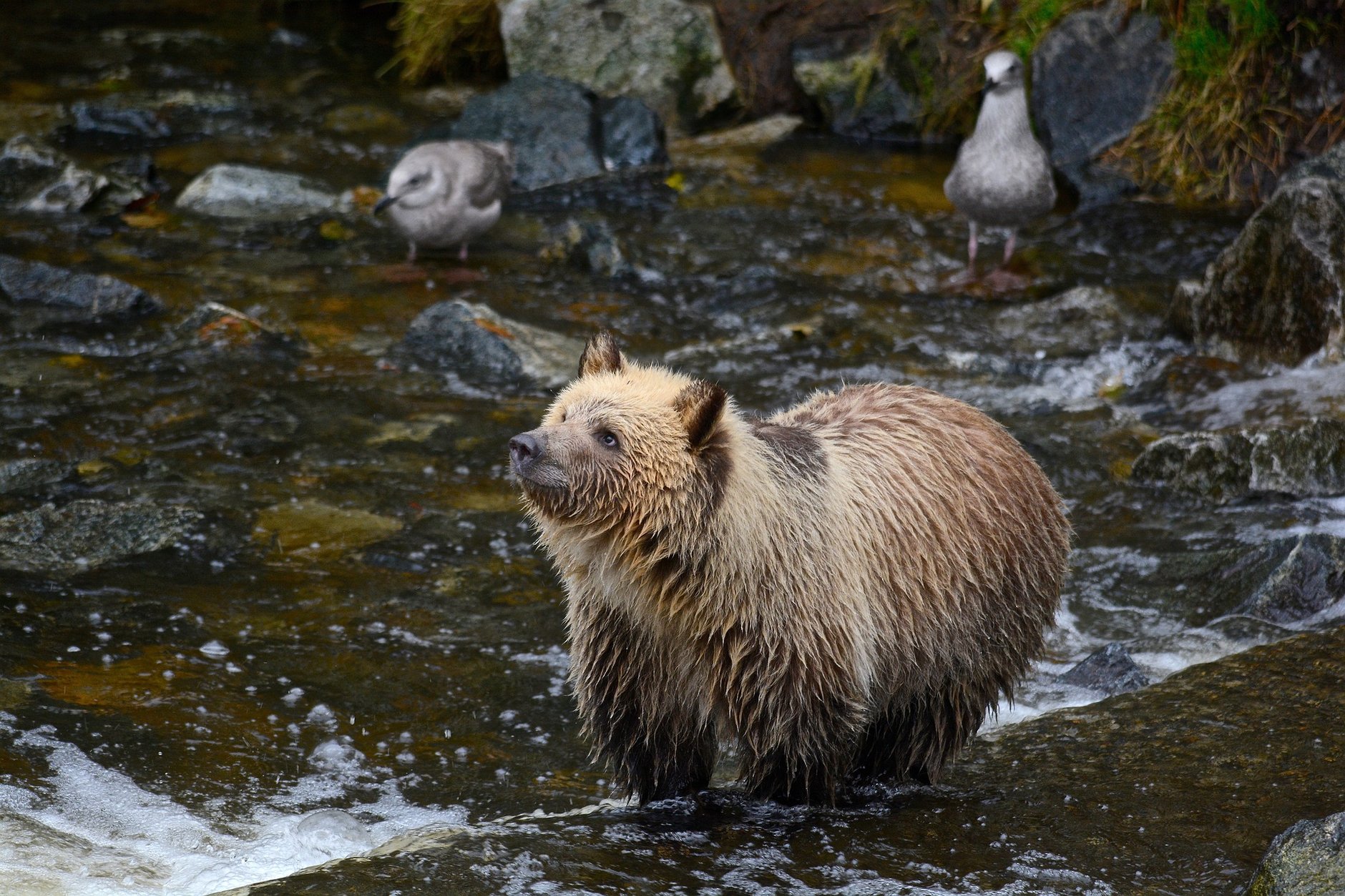(CN) — Conservationists got a partial win Wednesday after a federal judge ruled the U.S. Fish and Wildlife Service unreasonably delayed implementing its plan for grizzly bear recovery from 23 years ago and failed to conduct a supplemental environmental impact statement based on changed circumstances.
The decision handed down by U.S. District Judge Donald W. Molloy grants summary judgment on two out of three claims brought by the Alliance for the Wild Rockies and the Native Ecosystems Council, which sued Fish and Wildlife in 2021 for not implementing its grizzly bear recovery plans adopted in 2000, and for failing to finalize a proposed rule change regarding bear management in 2001.
Montana currently boasts more grizzlies than any state except Alaska. The bears are still threatened and protected under the Endangered Species Act, as their numbers plummeted from 50,000 to 1,000 between 1800 and 1975 due to westward expansion.
Around 40 years ago, Fish and Wildlife began investigating the scarcity of grizzly bears within the Bitterroot Ecosystem — a large habitat located primarily in central Idaho and stretching into western Montana. It is one of the largest contiguous blocks of federal land remaining in the lower 48 states and, according to Fish and Wildlife, it provides the best potential for grizzly bear recovery due to its expansive size.
As summarized by Judge Molloy, considerable public input, studies and the best available science spanning 15 years contributed to a record of decision and rule that elected to establish a nonessential experimental grizzly population through the introduction of 25 grizzly bears into the area, if funds were available. However, after 40 years, nothing has happened.
That’s because in June 2021, Fish and Wildlife changed course, abandoning its preferred alternative within its record of decision and proposing to take the “no action” option instead. Yet, had the agency actually implemented this decision, it would have changed Fish and Wildlife’s grizzly bear recovery plans, Judge Molloy pointed out.
Why Fish and Wildlife never implemented this final rule was less clear in court, too, according to Alliance executive director Mike Garrity.
“The judge asked that and the Fish and Wildlife Service said they didn't have the money, but there was nothing ever said in the record that they didn't have enough money to do it,” Garrity said.
Garrity also noted that it was speculated that it could have been for political reasons, given that the 2000 rule was issued right after a presidential election. Molloy’s order offers one other tip: “Unmentioned in the 2001 proposed rule, however, is a lawsuit filed by the state of Idaho over the service’s decision to engage in these active recovery efforts.”
Molloy speculates that while the ultimate resolution of that litigation is unclear, emails from Fish and Wildlife indicate that the lawsuit was the incentive for the agency’s proposed action.
“Even though the ‘no action’ alternative was never officially adopted, the record suggests it has been the agency’s plan ever since,” Molloy wrote.
Representatives for Fish and Wildlife were not immediately available for comment.
Despite Fish and Wildlife’s lack of action regarding grizzly recovery, grizzlies have made their way home to the Bitterroot Ecosystem anyway. Because of this, Molloy awarded summary judgment as to the Alliance’s claim that Fish and Wildlife needed to prepare an environmental impact statement to consider changes in circumstances regarding the threatened species in the area.
“When they finalized the 2000 rule, there were no grizzly bears in the Bitterroot grizzly recovery area,” Garrity said, noting that the last grizzly bear in the region was killed in the 1930s and that someone found a grizzly footprint in the 1940s. Otherwise, there has been no evidence of grizzlies in the area from the late 40s until the 2000s.
“Now, there's been a confirmed grizzly den in the Bitterroot grizzly recovery area and there's been several verified sightings of grizzly bears,” Garrity said.
Moreover, Garrity said Fish and Wildlife’s older plan now violates the Endangered Species Act 10(j) Rule, which only allows the agency to designate a population of a listed species as experimental if it is released into suitable natural habitat outside of its current range.
“But since grizzlies have come back on their own, that is no longer a viable option,” Garrity said. “So, we sued to enforce the provisions to institute habitat protection standards for grizzlies and public education, campaign for people who live in the Bitteroot grizzly ecosystem and how to live with grizzly bears, what to do things like carry bear spray and how to avoid grizzly bears and to educate people about proper garbage storage in bearproof containers. This can all be analyzed in a supplemental EIS, which is what the judge ordered the Fish and Wildlife Service to do.”
Subscribe to Closing Arguments
Sign up for new weekly newsletter Closing Arguments to get the latest about ongoing trials, major litigation and hot cases and rulings in courthouses around the U.S. and the world.









